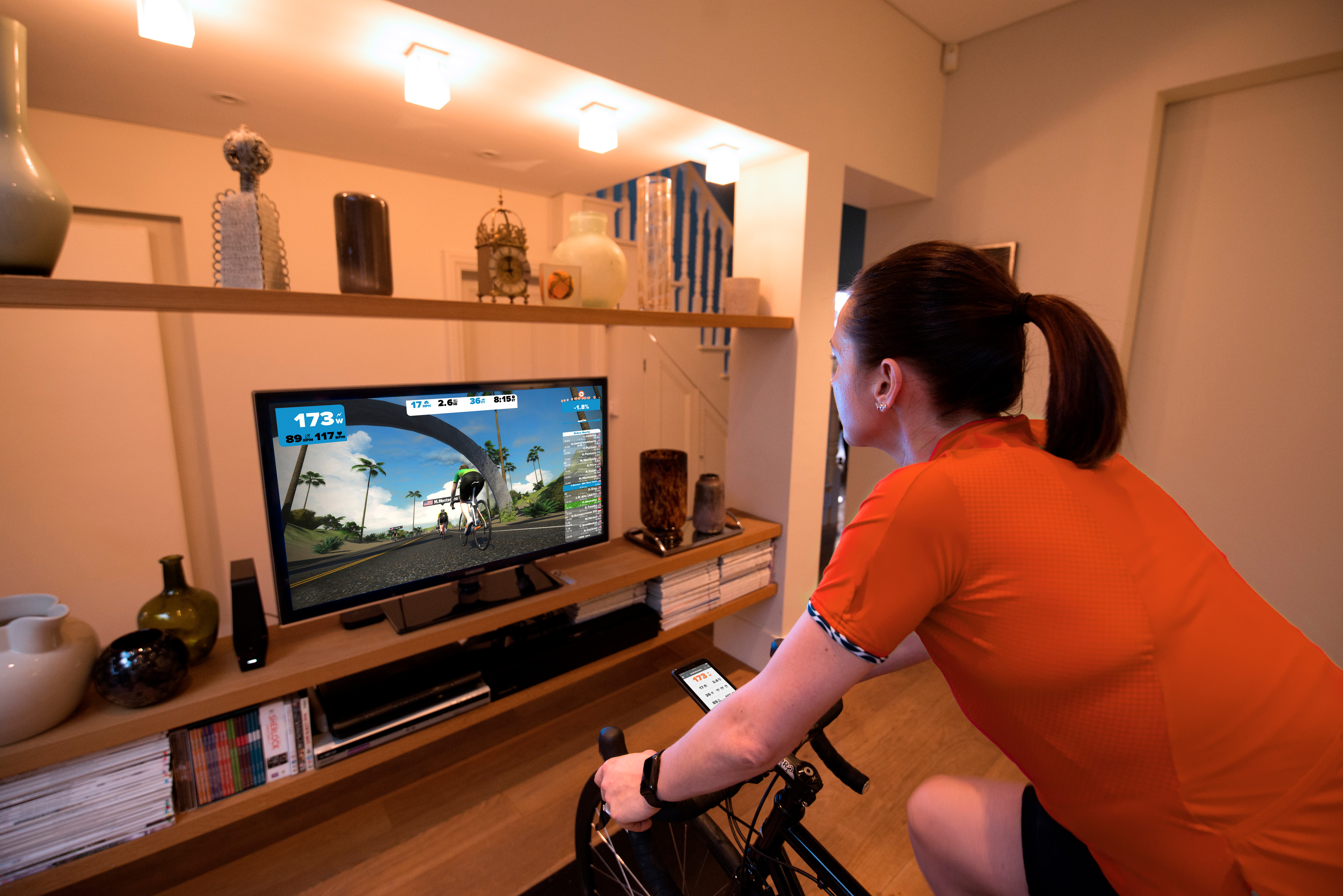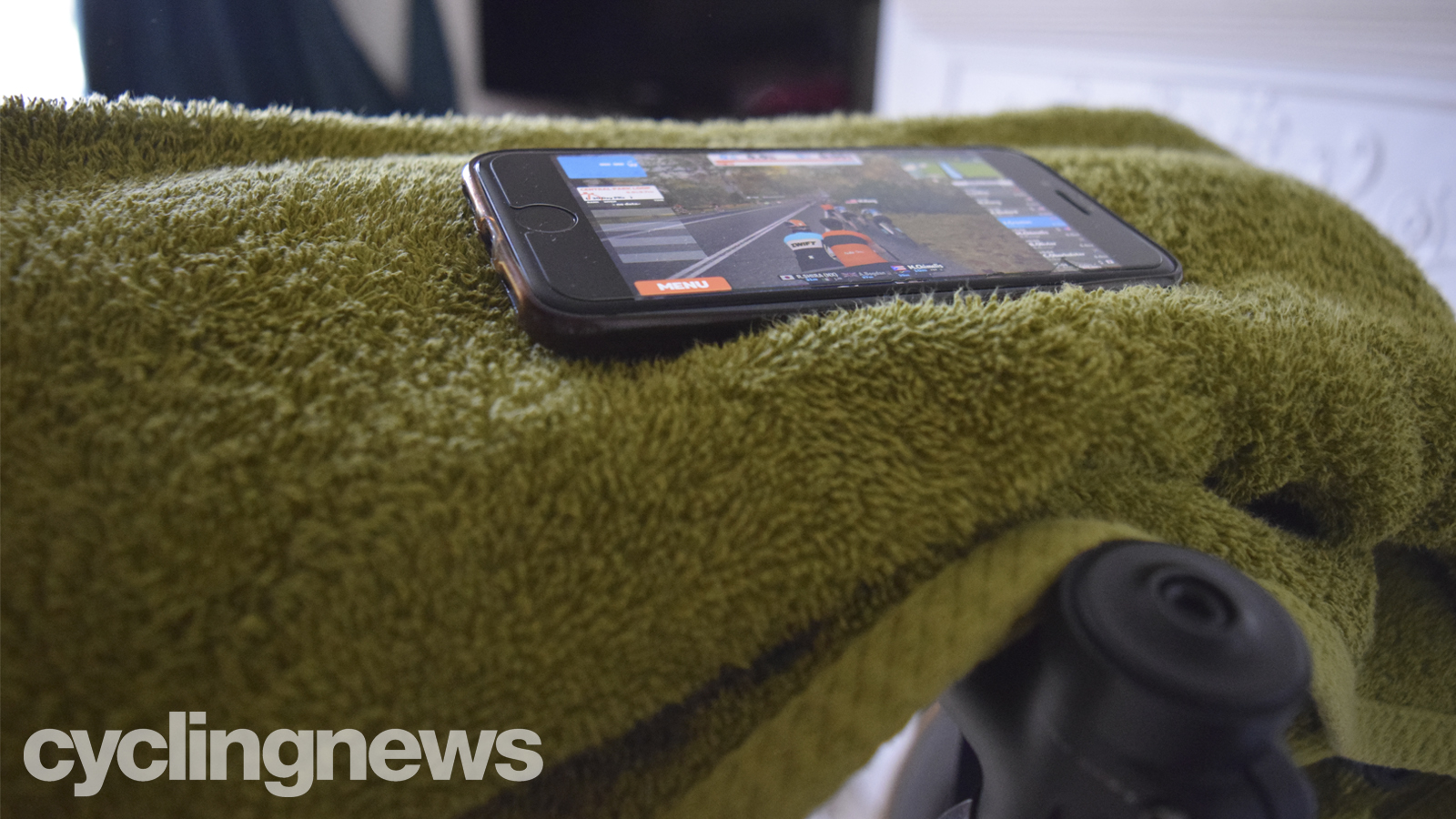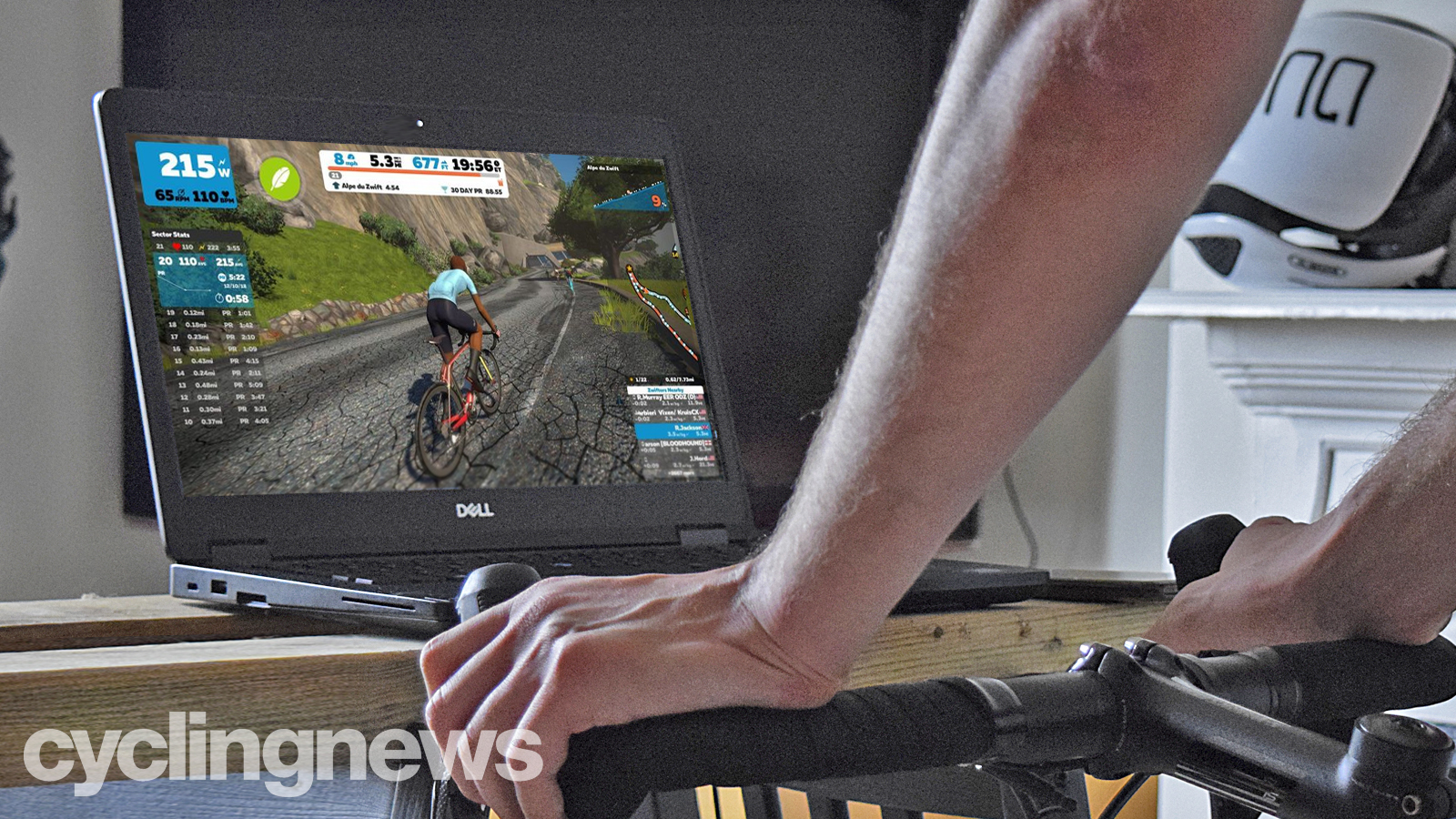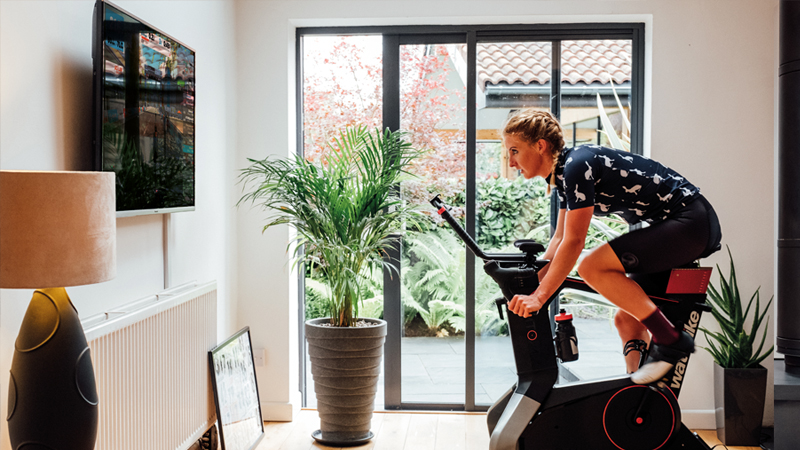Best Zwift setups: Indoor cycling setups to give you the competitive edge
Want to get faster on Zwift or in the real world? These are the best Zwift setups to help you achieve your goals

There's undeniable truth in the idea that any tool that facilitates cycling to a wider audience is a good thing. Therefore, by extension, any Zwift setup should be considered good. However, for the committed indoor cycling enthusiast, the best Zwift setups can make indoor training time a considerably more enjoyable and fun experience.
Once something becomes enjoyable, it's likely to be used more, so pimping your pain cave to include things such as smart connectivity, a clear display and a sizeable amount of airflow is likely to repay that investment with hours of entertainment and, if you do it right, an increase in fitness.
Zwift was launched back in 2015 but in the years since has revolutionised indoor training for cyclists. You can race, ride with people from all over the world and socialise with riding mates. Indoor cycling was once a necessary evil for committed training cyclists escaping the otherwise wet, cold and potentially dangerous winter cycling experience, but the virtual worlds on Zwift offer an engaging and addictive experience, helping more riders get fitter than ever before.
The platform uses standard connectivity technologies, so all of the best Zwift setups will also be compatible with other indoor cycling apps such as TrainerRoad, SYSTM and more.
You likely know all about it by now, but if you'd like more information on the platform, here is our ultimate guide to Zwift.
By connecting your turbo trainer or smart bike with Zwift on your smartphone, tablet or computer, you can immerse yourself in a virtual world of software-based interaction.
In simple terms, the harder you ride, the faster your virtual avatar will go. If you’re using a smart trainer or smart bike, it will tell the app how hard you're pushing on the pedals, and the app will automatically adjust the resistance in response to gradient changes, workout intervals and even road surfaces.
You can ride solo, follow single workouts or complete training plans, free-ride with friends, or join pre-organised group events which range from easy social spins all the way through to full-gas races against pro riders.
- Zwift training plans: A beginner's guide
- Zwift workouts: A beginner's guide
Whatever your budget and level of expertise, there’ll be a setup for you, but the more you spend, the more premium a solution you'll get. This will show itself by way of a more realistic, engaging and perhaps enjoyable experience, as well as a considerably quieter operation.
In this guide, we’ll run through the best Zwift setups to help you make the most of Zwift, as well as the new wave of other indoor cycling apps.
The best Zwift setups
To ride on Zwift, you'll need more than just a turbo trainer. You'll need something on which to run the app, as well as a place for everything to live. Your living arrangements will dictate your priorities. Do your housemates mind having a turbo trainer set up in the living room or do you need to put everything away afterwards? Is noise going to upset your neighbours? Do you even own a laptop that can run Zwift, or will you run it on your phone, tablet, or TV? All are considerations worth making before you decide, but here are three of the best Zwift setups, that can, of course, be mixed and matched to find your perfect solution.
For all setups below, we recommend a fan. Things get hot and sweaty without the airflow that comes from movement. The saying 'the bigger the better' has never been truer. We found great success in our Wahoo Kickr Headwind review, but a similar performance can be had for less money with a Lasko fan or traditional box fan - or three.
We also recommend Bluetooth headphones. This way, if you decide to lose yourself in some music to keep motivation high, you won't have to play it over your turbo trainer at a volume that your whole street can hear.
- Best headphones for cycling: The best headphones for your next indoor ride
Best Zwift setup on a budget

Budget setup: Dumb trainer, power meter and a smartphone
The humble smartphone is 32,600 times more powerful than the Apollo moon-landing guidance computers. Let's make the most of that insane technological feat by using it to ride aimlessly on virtual bikes on the internet in order to increase our FTP.
Most smartphones today can run the Zwift app, and depending on the session at hand, can be balanced atop a towel draped over the handlebars, however, a QuadLock will keep it sturdily in place.
A basic turbo trainer will not send any data to Zwift without a speed sensor or a power meter, so you'll either of those. For a more accurate Zwift setup, we recommend a power meter, and a Bluetooth-enabled one will forego the cost of an ANT+ adaptor. Our guide to the best power meters will help you to choose the right one for you.
Additionally, the dumb turbo trainer won't be controllable by Zwift, so you won't have the erg mode capabilities of a smart trainer. We recommend you choose a fluid turbo trainer that has a progressive resistance curve, (the harder you pedal, the greater the resistance), and you won't need to worry about manually adjusting the resistance via an often-plastic, hard-to-use 'remote'.
This is one of the more affordable solutions, assuming you already have a bike and a smartphone. The other benefit of using this method is the power meter can then be used to capture your data when riding outdoors.
If the value option is where your interest lies, you should read our guide to the cheapest Zwift setup, which explains the best way to get onto Zwift without breaking the bank.
Best Zwift setup for a mid-level budget

Mid level setup: Smart trainer, laptop and a desk
A smart turbo trainer essentially foregoes the need for a power meter, as it can capture the power you are outputting. It won't enable you to train outdoors with power, but it will offer a more complete setup for indoor cycling on apps like Zwift and TrainerRoad.
Smart turbo trainers come in two forms, wheel-on and direct drive. Our guide to the best smart trainers will explain all, but generally, a direct drive option will cost a little more, but be quieter and offer a more realistic road feel.
A laptop is a slightly better way to run Zwift as it will have a bigger screen than a smartphone. However, you'll need to double-check your laptop is Bluetooth enabled, otherwise you'll need a Bluetooth or ANT+ adaptor in order for your turbo trainer and laptop to be able to communicate.
An iPad or tablet can be the perfect compromise between a smartphone and a laptop, as it will have a larger screen than your phone, yet will most likely come Bluetooth-enabled, unlike some laptops.
Whether you choose a laptop or a tablet, you'll need somewhere to put it. We recommend a dedicated desk, such as the Kickr Desk from Wahoo.
Best Zwift setup for those with a big budget

Premium setup: Smart bike, wall-mounted TV and Apple TV
A smart bike, such as the Wattbike Atom, is a dedicated exercise bike that does everything a smart turbo trainer does, but better. Usually belt-driven, a smart bike is generally quieter than a bike affixed to a turbo trainer, and usually features easily adjustable touchpoints like saddle height and handlebar height.
Smart bikes won't fold away to be hidden in the cupboard under the stairs, and they aren't a cheap solution, but they are a worthy consideration to anyone with a dedicated pain cave.
Given they're likely to remain in situ, they're well paired with a TV on the wall, and anything from a fourth-gen Apple TV can run Zwift (although older models can still use screen mirroring).
You can also add to the setup by using indoor cycling clothing and shoes, which are generally designed to be more breathable. Our guide to the best indoor cycling shoes will help you choose.
Get The Leadout Newsletter
The latest race content, interviews, features, reviews and expert buying guides, direct to your inbox!

Josh is Associate Editor of Cyclingnews – leading our content on the best bikes, kit and the latest breaking tech stories from the pro peloton. He has been with us since the summer of 2019 and throughout that time he's covered everything from buyer's guides and deals to the latest tech news and reviews.
On the bike, Josh has been riding and racing for over 15 years. He started out racing cross country in his teens back when 26-inch wheels and triple chainsets were still mainstream, but he found favour in road racing in his early 20s, racing at a local and national level for Somerset-based Team Tor 2000. These days he rides indoors for convenience and fitness, and outdoors for fun on road, gravel, 'cross and cross-country bikes, the latter usually with his two dogs in tow.